The Sansevieria plant, also referred to as mother-in-law’s tongue or snake plants, has become a well-known houseplant. In this article, let’s talk about flowering snake plants.
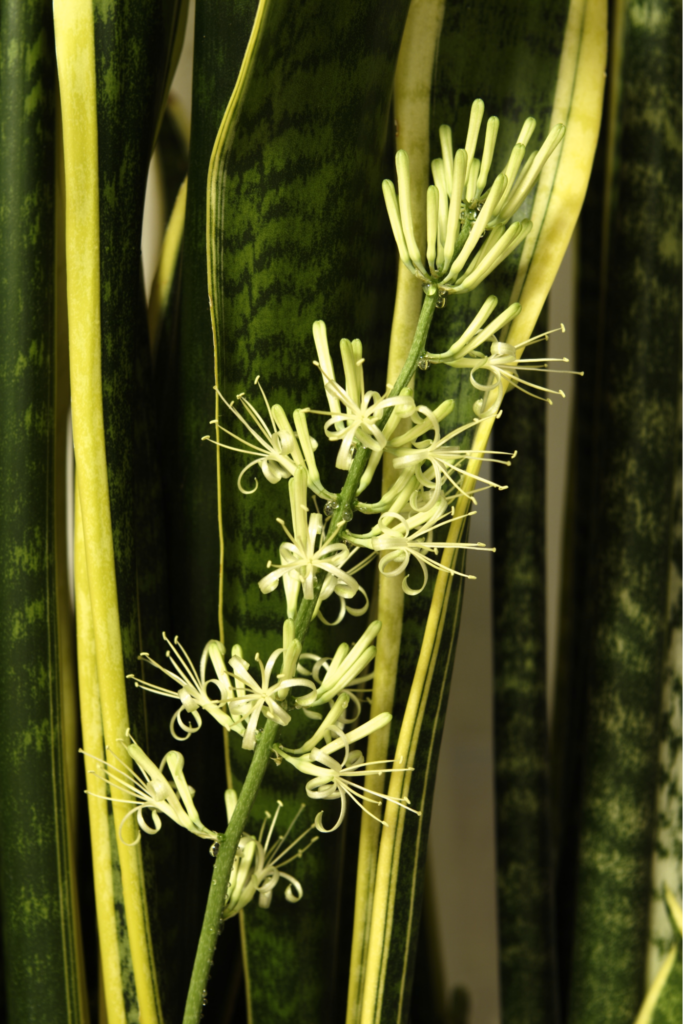
Snake plants are attractive because of their leaves that are pointed and structured, which could have yellow or stripped, jagged edges. In addition, their easygoing demeanor and capacity to endure the majority of indoor and outdoor situations contribute to their charm.
However, the snake plant’s magnificent yet elusive blossom, not its remarkable appearance, is what makes it most distinctive. Snake plants do indeed have blooms! However, the occurrence is so uncommon that owners are unlikely to ever witness their snake plant produce a tiny white flower. Some cultivars never flower at all.
If your snake plant is a blooming kind, you might find a blossom among the leaves one day. In this article, we will show you a few ways to encourage your snake plant to produce its enigmatic blossoms, if you want to force a flower out on your own.
Keep on reading!
RELATED: Snake Plant (Sansevieria): How To Get Your Plant To Flower and More
What Does A Sansevieria Plant Blossom Look Like?
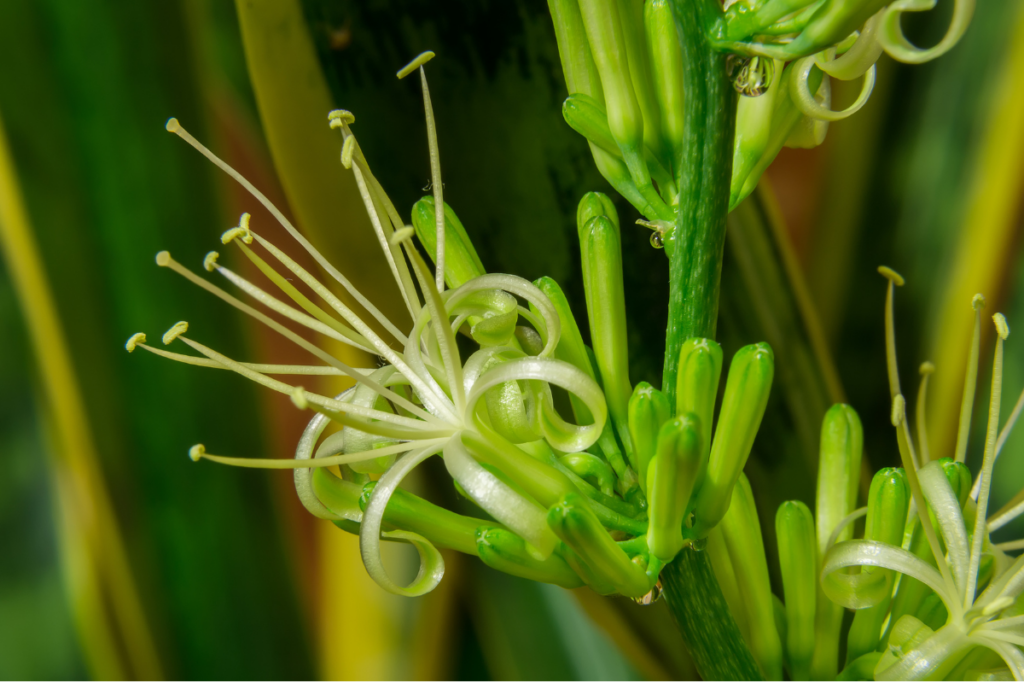
Occasionally, you could notice your plant blooming. But before they produce flowers, first, a stalk will start to grow. The leaf tips of your sansevieria will be dwarfed by this stalk’s potential three-foot height. Usually, there will be just one stalk per snake plant bloom.
A lot of tiny, tubular flowers that have thin petals, forming clusters, are embedded all over these stems. These little flowers mimic lily or honeysuckle blossoms.
Some varieties of plants don’t grow stalks. Instead, they create sizable floret clusters near the base of the plant.
Both the blossoms and the snake plants themselves come in a wide range of hues. The appearance of these hues often ranges from white and cream to greenish-white or even yellow. The petals stand out in contrast to the colorful foliage of the shrub.
Even though the flowers are rare, when they do occur, they are beautiful and have a powerful scent.
How Long Does Snake Plant Flower Last?
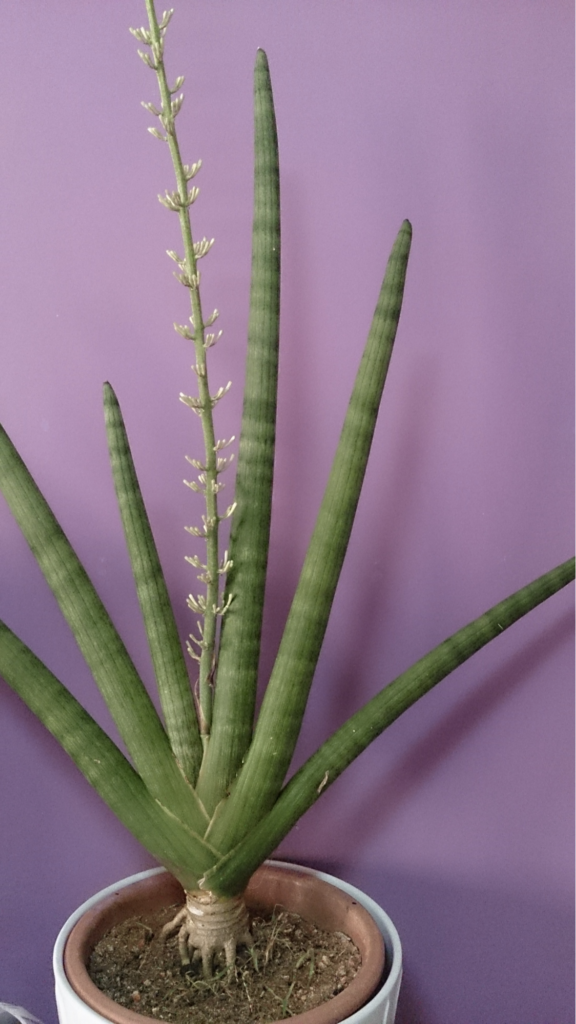
Sansevieria plants only bloom once a year, typically in the spring, if they generate flowers. The blossoms last for a few weeks before slowly fading away and maybe producing berries.
Fortunately, after they have blossomed, the plants themselves do not perish. So take in the show because it could be a while before you see it again.
Do Snake Plant Flowers Have Scent?
Flowers from snake plants release a powerful scent at night. Additionally, they have a sweet, sticky nectar that condenses on the stems to form dew drops. These smell delicious and strong.
The flowers bloom at night and close during the day.
What Makes Snake Plant To Bloom?
Only when a flowering plant is continuously and minimally stressed will a flower stalk develop. It does this because, like many other plants, it thinks it’s time to die. So, in order to reproduce, the plant makes blossoms and scatters seeds.
When snake plants become root-bound, it is when they experience the most stress.
The truth is that nobody is entirely sure how to get snake plants to flower. The age of the plant is one of several variables at play. Snake plants occasionally only bloom when their bare necessities are satisfied, but they can be coaxed into blooming with a little neglect.
How To Make Your Snake Plants Flower?
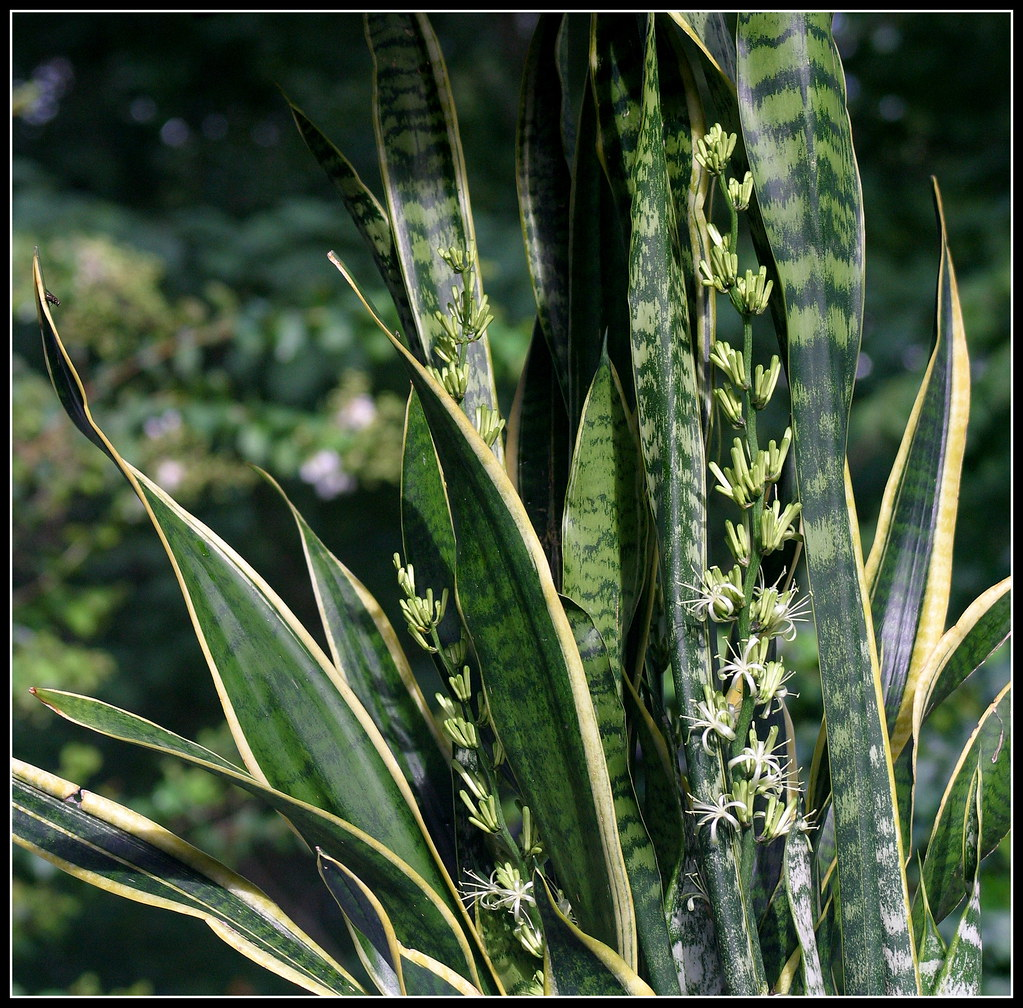
The snake plant you now have may or may not blossom. But there are some things that might make it blossom.
1. Light
Snake plants or Sansevierias, are renowned for being laid-back creatures that can thrive even under the most careless plant parents. Normal light conditions for your plants include full shade and sun. Although, snake plants favor continuous, indirect sunlight. As gardeners are aware, light is the source of energy needed to create flowers, hence it is best to have a Snake Plant outdoors to make it bloom.
Remove your Sansevieria plant from the dim areas of your house to improve the likelihood that it will bloom. Instead, put it in front of a sheer curtained window so that it receives enough of bright light all day long.
Read more information on Snake Plant light requirements.
2. Water
Snake plants are capable of surviving on very little water. Therefore, they are thought of as semi-succulent plants since they require minimal water and can store moisture in their foliage.
Snake plants also prefer dry soil rather than slow or damp soil, and they hate having their feet wet. In addition, an excessive amount of watering might cause the leaves to crack and rot. Nevertheless, protracted droughts can also be damaging.
When the ground seems absolutely dry to the touch, just water snake plants. Depending on the weather and temperature, this may only happen twice a month. Winter is the time to water your Sansevieria even less.
Many people hold the opinion that snake plants will bloom under hardship as long as their light needs are met. Some claim that watering the snake plant as little as possible causes it to become stressed out enough to blossom. You can try this approach if you’re willing to take a chance on other potential problems that could arise from underwatering.
You can get more tips on how to properly water your Snake Plants.
3. Nutrient And Soil
Very light, quickly draining soil is required for snake plant cultivation. As was already mentioned, snake plants are prone to root rot in extremely damp soil. Your soil’s drainage and aeration will improve just by adding some river sand to your potting mix.
Usually, snake plants don’t require additional nutrients to flourish. A high phosphorus fertilizer, however, can boost your snake plant’s chances of flowering. Usage cautiously since excessive use could generate nutrient imbalances in the soil, which would hinder development.
Read more about Snake Plant soil requirements.
4. Temperature
Native to West Africa, snake plants prefer tropical climates. USDA zones 9 to 11 are the greatest for them to grow. Snake plants grown outdoors must be brought within for the winter since they cannot endure temperatures below 50F.
Your snake plant will suffer if it is exposed to drafts and freezing temperatures, even though some stress may make it bloom. Less water or higher temps are far safer alternatives that won’t quickly kill your plant and may be able to be fixed later if the harm is not severe.
5. Plant Age
When and if your snake plant blooms depends a lot on how old the plant is. Younger plants can occasionally blossom, but this is incredibly uncommon.
Under the correct circumstances, older, more established plants have a better likelihood of generating blooms.
Additionally, established plants are more likely to become root- or pot-bound, which adds to the plant’s stress. Snake plants have a tendency to fill the entire pot when they are given adequate light but are ignored. The snake plant switches its focus from creating leaves to producing blossoms as a result of the smaller environment.
6. Pot Size
The general consensus is that snake plants blossom slightly stressed out. When someone is under stress, they don’t receive their entire attention, are exposed to bright lights, and drink less water. As a result, plants will eventually proliferate widely and be root-bound, allowing new branches to emerge.
Although flowering is induced by propagation, other elements, such as soil, location, and soil, also affect flowering, thus, this does not guarantee that your plant will bloom when potted.
On the other hand, pot conditions affect blooming. As a result, make sure you grow snake plants in a well-drained pot, especially one made of terracotta that encourages evaporation.
7. Diseases And Pests
Pathogens and pests can severely stress out otherwise healthy Sansevieria plants and divert energy from plants that they would utilize for development and blossoming. Because of this, you should be extra vigilant about examining your Snake Plant for common signs of plant problems, such as aphids, southern blight, spider mites, root rot, and southern blight, if you’re hoping for some snake plant blossoms.
Try to treat your Snake Plant with neem oil or any organic insecticidal spray if pests like spider mites appear. On the other hand, fungi are the cause of problems like southern blight, which should be given organic fungicidal spray treatments.
Repotting your plant can occasionally fix root rotting if it is discovered early, but, if root rotting is extremely severe, plant propagation and starting over is typically the best course of action.
RELATED: 21 Types of Sansevieria – Indestructible, Exotic, and Elegant Air Purifiers
Should You Allow Your Snake Plants To Bloom?

Many people who own houseplants are concerned that if their gorgeous snake plant flowers, it may be nearing the end of its journey.
Snake plants do not, however, blossom once before withering away like air plants and bromeliads do. In truth, Sansevierias can bloom successfully yearly when given the right circumstances.
Your lovely snake plant won’t suffer any harm from blossoming, therefore the primary reason you want to discourage it is mess.
Whenever snake plant blooms do open, they release a lot of sticky, viscous nectar that condenses into dewdrops on the petals and even trickles through flower stalks. Again, this won’t harm your plant, but it might draw pests, which can be a problem.
Nevertheless, most keepers are content to let their plants blossom given the scarcity and beauty of the flowers.
Trimming spent stalks at the plant’ base after blooming is a wise move. This improves energy flow back into the body of the plant and gives it a neater appearance.
Additionally, it’s crucial to remove old stalks since if left unattended, they may turn into orange berries. Although these orange fruits or berries appear to be fairly appetizing, they are poisonous if consumed and can be dangerous for both pets and young children.
Why Do Snake Plants Bloom So Infrequently?
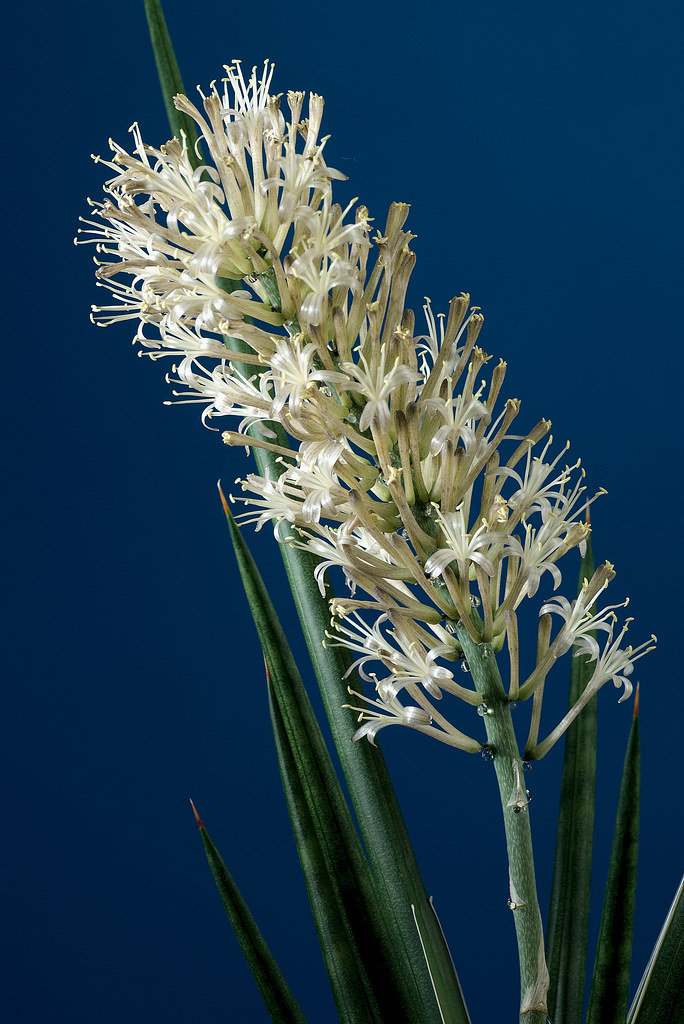
Sansevieria plants hardly ever blossom, although it does happen once in a while. Snake plant flowers are produced because your plant may have undergone some stress. But don’t worry; nothing will affect the plant’s development or the rest of it if you have a flowering snake plant.
This bloom, unlike all others, only appears on one plant out of a hundred.
It shouldn’t be forced to blossom. Your Sansevieria plant may not bloom again for another 10 years or more. But this depends on the particular circumstances it is grown in.
What To Do When A Snake Plant Is Flowering?
Your plants are unaffected by the flowers. However, they frequently appear when people are under stress. The reason is frequently that your plant is root-bound.
If you haven’t recently repotted your snake plant, you might want to think about doing so. Rarely, snake plants can grow so root-bound that they can no longer support themselves in their pot.
Look for telltale indicators, such as roots sprouting out of the pot’s bottom or roots covering all of the dirt in the pot, to determine whether the plant needs to be repotted. The pot can even start to bulge or crack.
Do Snake Plants Die After Blooming?
You need not fret if you are worried that your snake plant will die after flowering. There are certain plants that are monocarpic and pass away after flowering. Others, who are polycarpic, will bloom once again at the same time.
Since each rosette of the snake plant produces a flower spike just once in its lifetime, it falls between the two categories. Once that happens, it won’t produce new foliage and won’t perish because the leaves will stay there for years.
Deep in the soil, the rhizomes grow new rosettes and may even produce flower buds.
Is The Snake Plant Flower Poisonous?
Snake plants are poisonous when consumed, resulting in nausea and vomiting, although having little impact on humans. In addition, snake plants have saponins, which are used to make fungicides and pesticides.
Humans are vulnerable to getting allergies as a result of these hazardous compounds. Additionally, it’s best to keep children and animals away from the plant, especially the blooms, long stems, leaves, and berries.
Is The Snake Plant Flower A Symbol Of Good Luck?
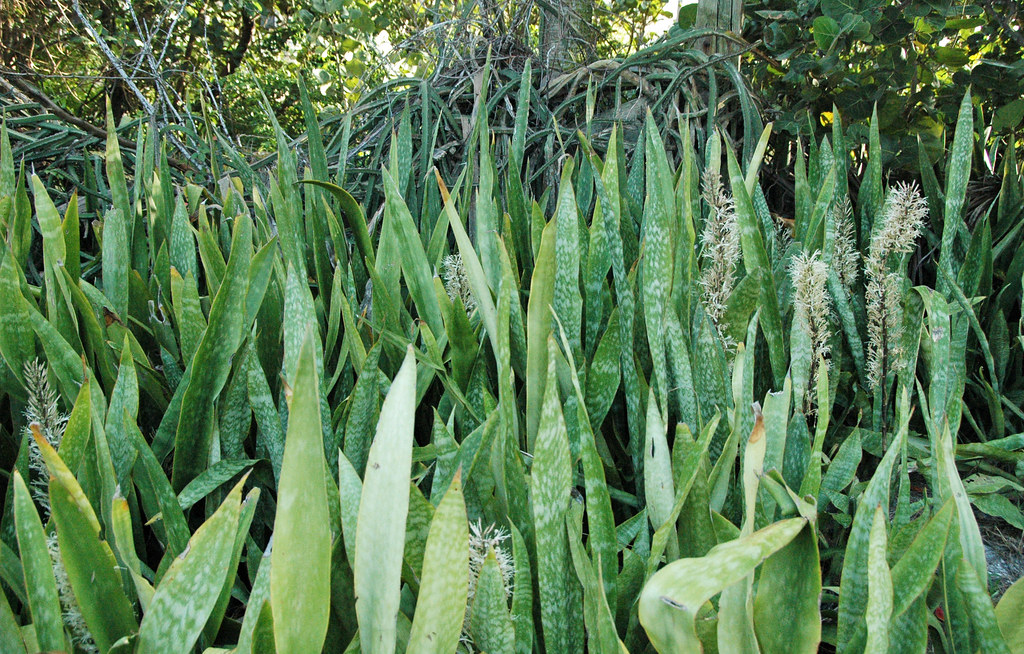
It can be a positive omen if your snake plant bloomed because it’s uncommon for them to do so. More so than their propensity to flower, though, these plants are revered for their capacity to remove pollutants from the air.
Some even believe that because snake plants are associated with luck, money will be drawn to the plant. If achieving this is your aim, you ought to look into the Money tree. Money Tree has a deeper meaning than a snake plant.
RELATED: Snake Plants In Water: Helpful Tips in Growing Them and More Information
Final Thoughts
Because snake plant flowers are so uncommon, few people even know the plant can bloom. Sometimes these blooms just appear out of nowhere or for no apparent reason.
Snake plants don’t need much attention to survive, and some people even believe that neglect encourages the plant to grow. In the end, the sweet, elusive white flowers can be obtained by being patient, taking care of this plant’s lighting requirements, and adding a little healthy stress.
Remember that the nectar from these flowers is viscous and sticky, and they have a distinct perfume. This nectar can make a big mess and tends to draw pests. Other than that, when and if your snake plant decides to flower, these uncommon blooms are a real treat.
Editor’s Recommendations
Hello, Why Is It Yellow? 5 Reasons Why Your Sansevireia Is Changing Color
How To Propagate A Snake Plant: What You Need To Know
Snake Plant Roots: What To Look For In A Healthy Sansevieria Plant







